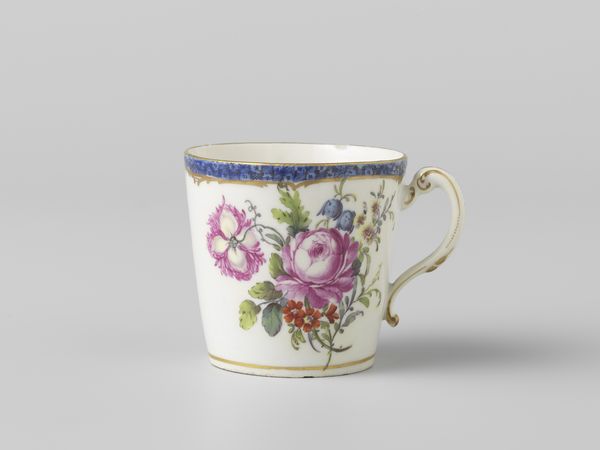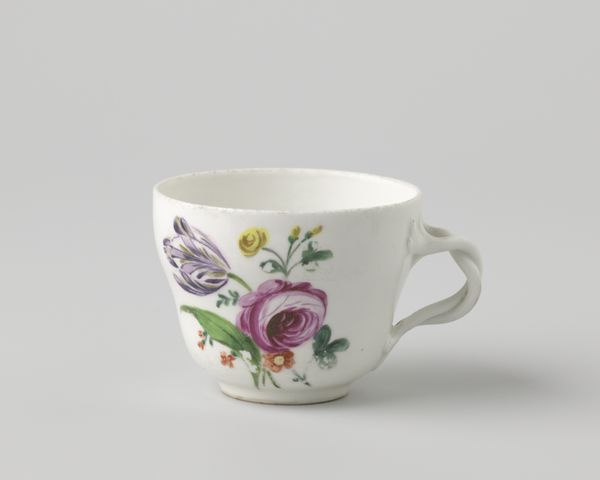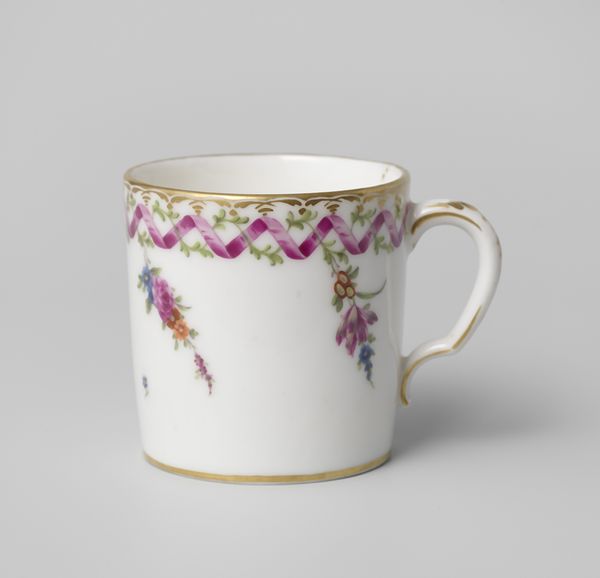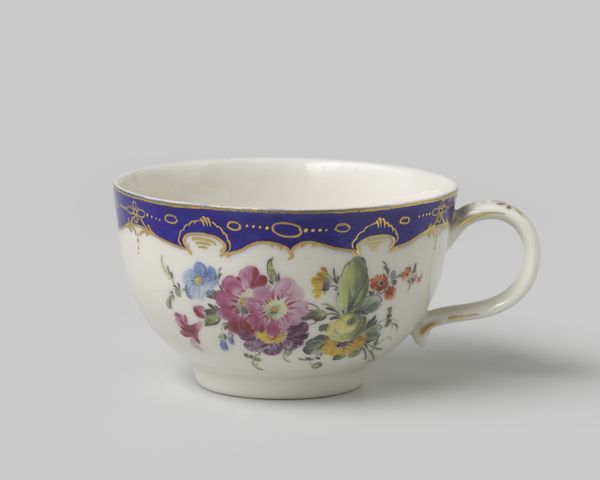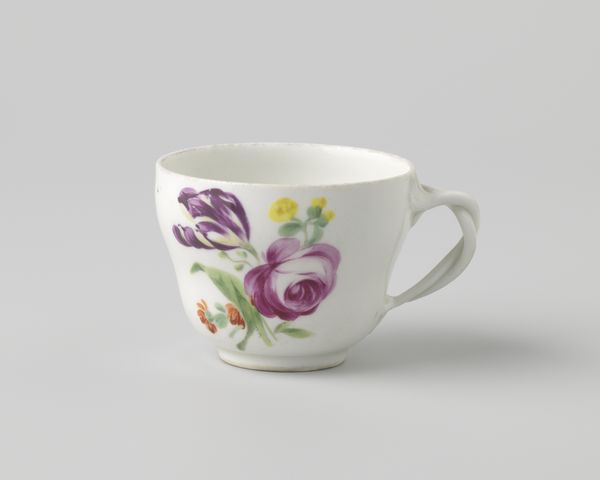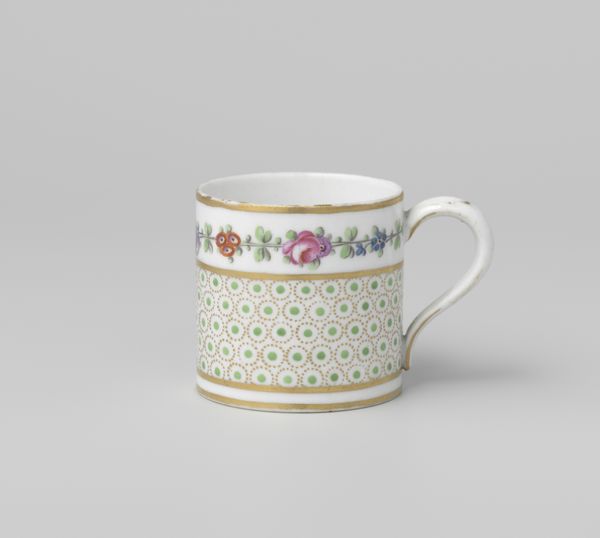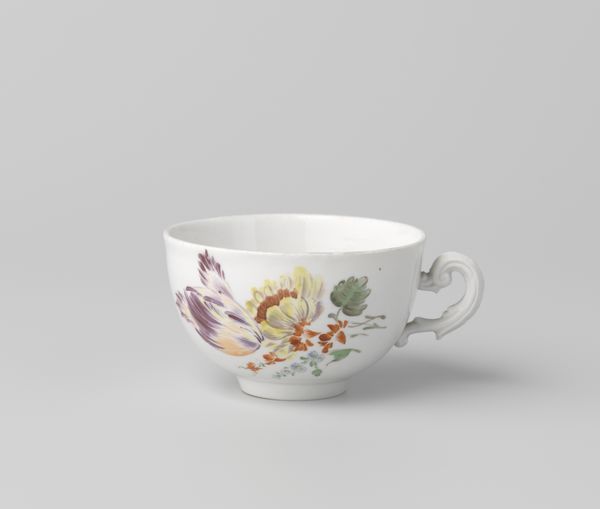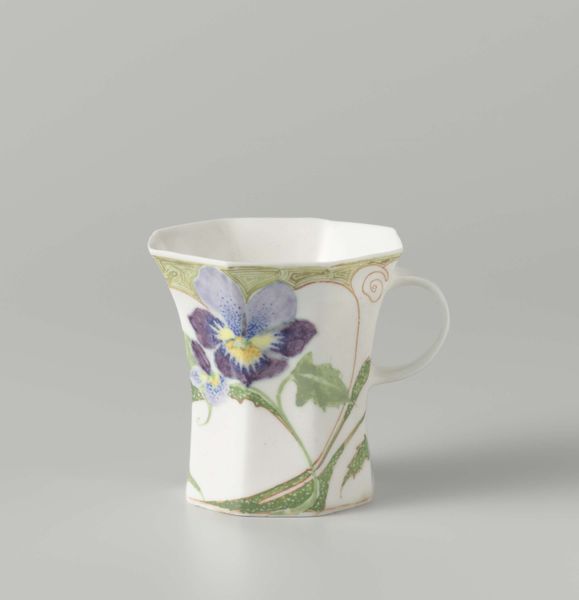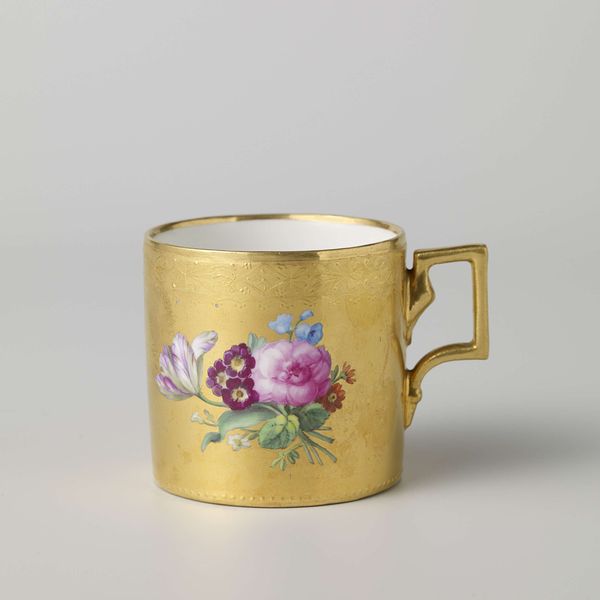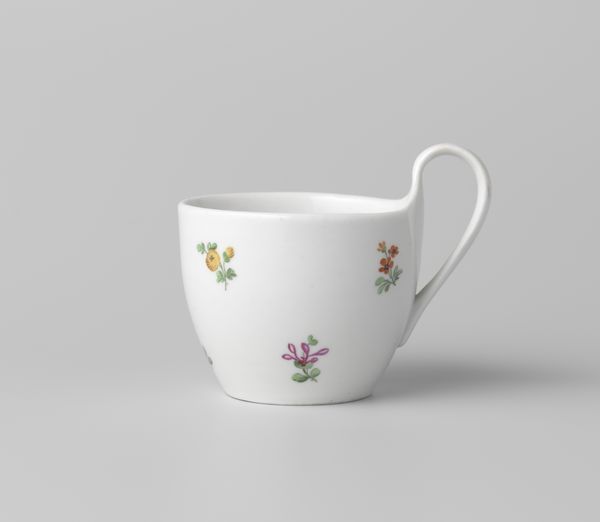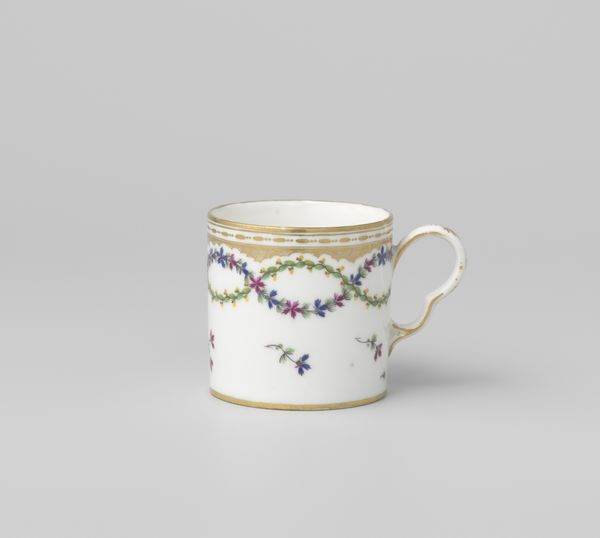
ceramic, porcelain
#
product photograph merchandise
#
product studio photography
#
circular oval feature
#
product promotion photography
#
cake food
#
product fashion photography
#
lifestyle product photography
#
ceramic
#
round design
#
retro 'vintage design
#
porcelain
#
food illustration
#
romanticism
#
decorative-art
Dimensions: height 6.3 cm, diameter 7 cm, diameter 6.1 cm, width 8.9 cm
Copyright: Rijks Museum: Open Domain
Curator: Here we have a porcelain cup crafted by the Kaiserliche Porzellanmanufaktur, dating roughly from 1800 to 1849, adorned with bouquets and scattered flower sprays. What's your immediate impression? Editor: It’s quite charming, isn't it? There’s a delicate sweetness about it. It feels very…contained, like a secret garden held in the palm of your hand. Almost bourgeois and conformist. Curator: That's interesting. Because the proliferation of these types of decorative pieces directly correlates with the rise of the middle class during that period. Porcelain, once exclusive to the aristocracy, became more accessible. Owning pieces like this became a marker of social aspiration. Editor: Exactly, it visualizes cultural shifts. Do you think that flowers, such as roses, play a subversive function or are we only speaking about surface appeal to conform? Roses do signify romance but the arrangement is so specific in that period of time, no? Curator: Absolutely. The specific types of flowers, their arrangement, even the colours chosen all held symbolic meaning in the language of flowers popular during the 19th century. It’s also critical to consider the position of women. For many women of this era, these decorative crafts would be amongst the limited forms of art creation available to them. Editor: So this simple cup becomes quite potent, almost radical even, no? I find the purple and yellow very striking, colors typically associated with royalty, decadence. Was the cup intended to be sold to any social class? Curator: Certainly not for any, since porcelain remained comparatively expensive during that period. However, the cup acts a signifier of domesticity which becomes more visible for middle class individuals. But what of its romantic quality, where does it place this small object within its larger historical and societal context? Editor: I think you're spot-on. The romantic sensibility, that longing for beauty and connection, speaks to something deeply human. A porcelain cup might seem trivial, but it connects to significant social shifts. Curator: And on a micro level, we get to see how the historical desire of self-expression via material culture manifested for ordinary individuals, which is really insightful.
Comments
No comments
Be the first to comment and join the conversation on the ultimate creative platform.

